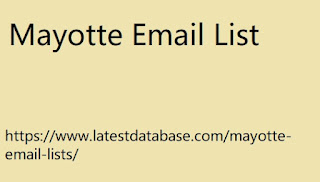|
|
needs and preferences. Therefore, segmentation can improve: Your conversion rates Your revenue (attracting more relevant customers, up-sells, cross-sells) Customer satisfaction Customer knowledge However, to maximize success, it is important to avoid common mistakes, such as not considering Cultural differences or not updating segments. By using the right tools and technology, such as CRM and lead scoring, you can personalize communications and prioritize sales actions. How to implement segmentation marketing strategy? To implement an effective segmentation marketing strategy, you must first define the segments using segmentation criteria (point 1) and then evaluate whether the operation is profitable (or ROI). Step 1: Define Segments Using Segmentation Criteria This step involves identifying different groups of consumers or businesses and defining segmentation criteria, which will be different for every organization,
Socioeconomic criteria: social Mayotte Email List professional category (CSP), income level, education level Psychological criteria: interests, lifestyle, personality, values, technological maturity, culture, cognitive bias... Purchasing behavior criteria: RFM, which is the recency of purchase , frequency of purchases, quantity purchased (average basket), but also buying habits, product usage... and past purchases, personalized recommendations like Customer Experience Champions Socio-demographic criteria (more in B2C More): Age, gender, height, place of residence, marital status Organizational criteria (B2B only): Company characteristics, location, turnover, size, seniority, decision makers, social capital, activities, service area, workforce, domestic and export Turnover etc. See also "What is Account-Based Marketing?" Step Two: Assess the Profitability of Each Segment At this stage,

the potential of each segment needs to be analyzed, i.e., costs, risks, and benefits are assessed. There is no point in addressing micro markets that have no business potential. On the other hand, buying behavior criteria often include gems and “quick wins.” For example Maryse has not purchased for 5 months, whereas the usual frequency is "buy X euros every two months". She no longer opens email X or only opens emails from this category Y. If this criterion is repeated for multiple "Maryses", please send such email containing the 10% limited discount offer within 8 days. The possibilities are vast, especially if you're equipped with marketing automation software that integrates with your CRM (see below). Three Mistakes to Avoid When Implementing a Marketing Segmentation Strategy When implementing a marketing segmentation strategy, it is best to avoid some common mistakes,
|
|
